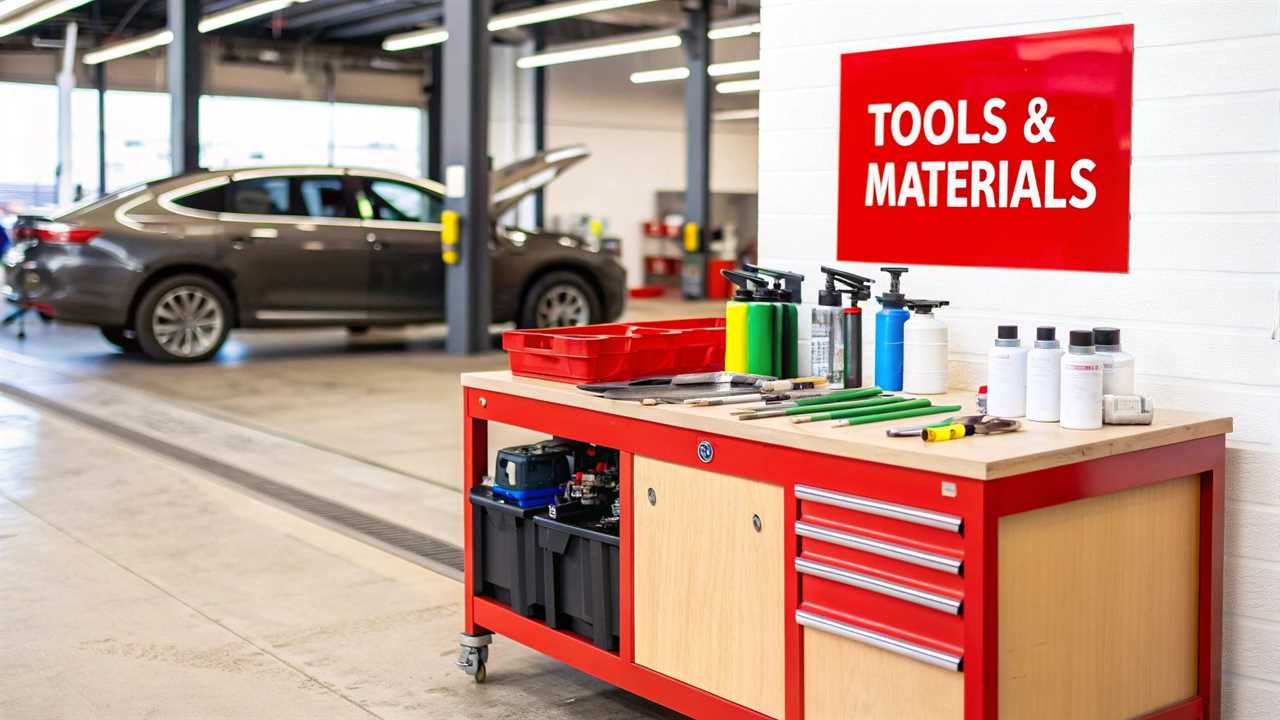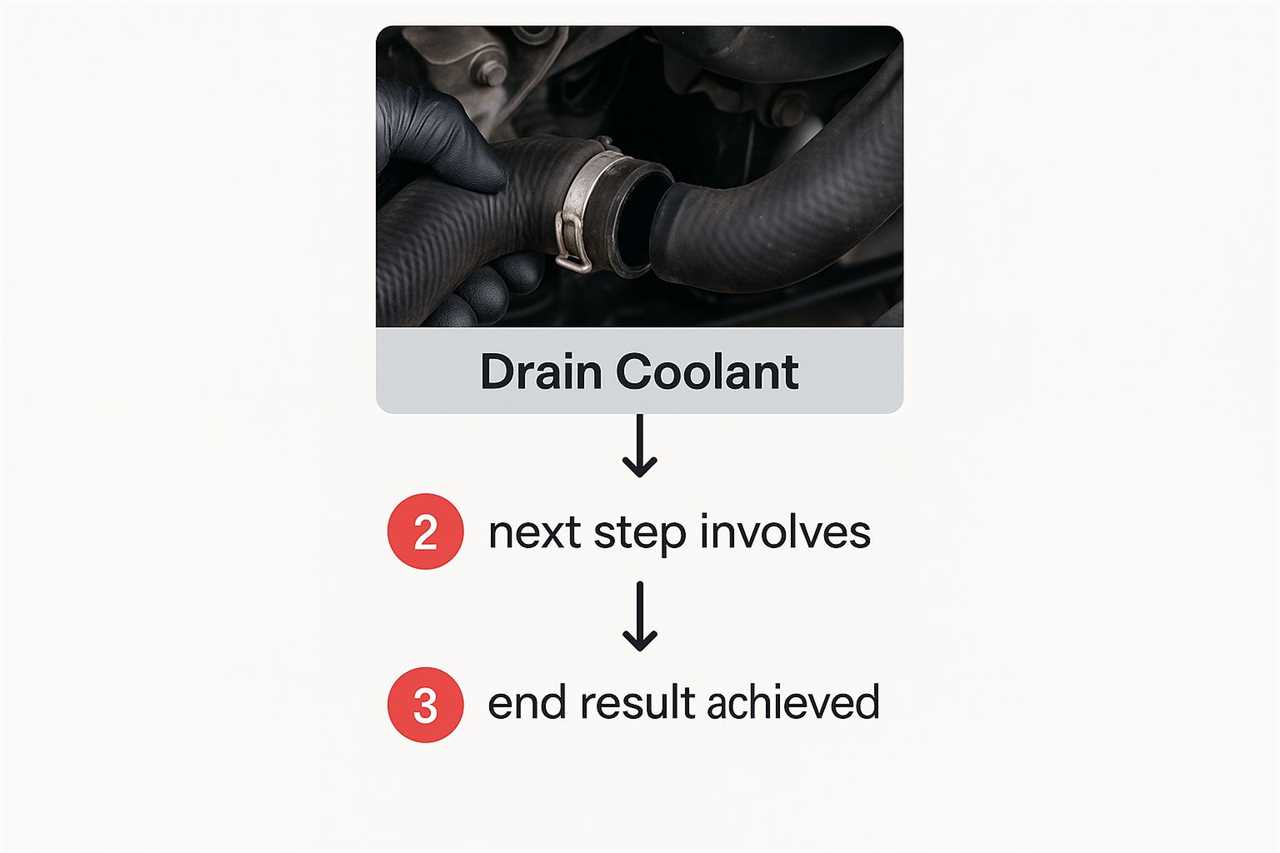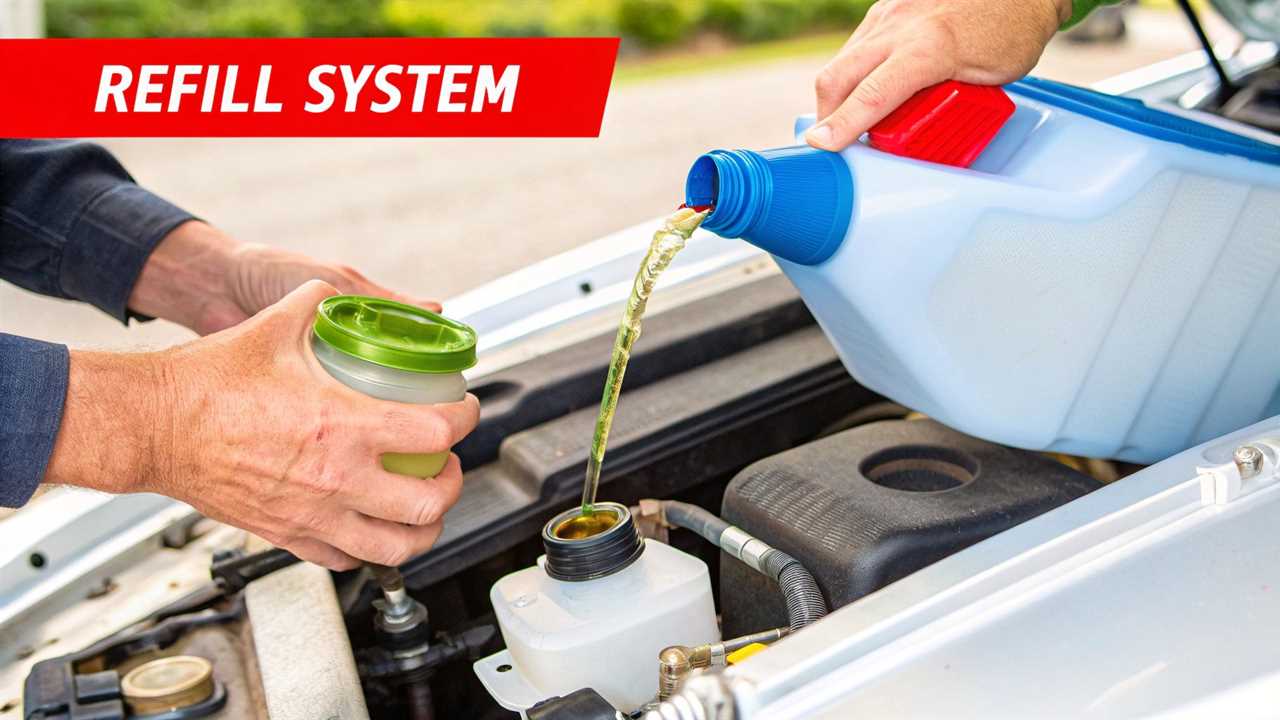Knowing how to flush a cooling system is a fundamental maintenance skill. It involves draining old coolant, cleaning the system, and refilling with fresh fluid. This simple job can prevent overheating on the trail and protect your engine from long-term damage.
Why Flushing Your Cooling System Matters

Before grabbing your tools, let’s discuss why this is a critical task. A proper coolant flush does more than just prevent overheating. It actively defends against corrosion and sludge buildup in your engine’s cooling passages.
This gunk is the root cause of many expensive problems. You can learn more in our guide on how to stop and prevent radiator leaks.
Modern cooling systems are complex and tied to electronic controls. As vehicles get smarter, the need for regular maintenance grows. While this guide covers the DIY route, don’t hesitate to seek professional heating and cooling system services if you feel overwhelmed.
Gearing Up for the Job
Before you open the radiator cap, it’s smart to get all your tools ready. A little prep work now saves a ton of headaches later. Having everything within arm’s reach makes the process much smoother.
You’ll need a drain pan large enough to catch all the old coolant. A good funnel is also your best friend to prevent splashes. Grab a basic socket or wrench set for drain plugs and hose clamps.
Most importantly, get proper safety gear. At a minimum, you need a good pair of nitrile gloves and safety glasses. Coolant is hazardous, so avoid contact with your skin or eyes.
Pro Tip: Slide a big piece of cardboard or an old tarp under your vehicle before you start. Drips are inevitable no matter how careful you are. This simple step makes cleanup a breeze and saves your driveway from stains.
Draining and Flushing the System
With your gear laid out and the engine completely cool, it’s time to begin.
First, you need to drain the old coolant. Locate the radiator’s drain valve, a small plastic plug called a petcock, at the bottom of the radiator. Place your drain pan underneath and open the valve.
Not all vehicles have a petcock. If you can’t find one, disconnect the lower radiator hose instead. Loosen the clamp, wiggle the hose off the radiator outlet, and be prepared for a fast gush of fluid.
This picture gives you a good idea of what that first step looks like.

Draining the old fluid is just the start. If the system has gunk and rust, use a dedicated flushing agent to clean it thoroughly. These cleaners are popular for a reason—the market was worth about USD 1.2 billion in 2024, showing their importance. You can find more stats on the automotive cleaner market on Verified Market Reports.
Refilling and Bleeding Air from the System
With the old gunk flushed out, it’s time to refill the system. Getting this step right is absolutely critical. Trapped air is the top cause of overheating after a coolant flush, so don’t rush this part.
First, prepare your new coolant. Unless it’s premixed, you must mix the coolant with distilled water to a perfect 50/50 ratio. Pour the mixture into the radiator slowly to avoid creating air pockets.
A spill-free funnel kit is a game-changer here, making the job cleaner and helping to purge air as you fill. The concept is similar to bleeding other hydraulic systems on your rig. For comparison, see our guide on how to bleed a hydraulic clutch.
Once it looks full, cap the radiator, start the engine, and turn the heater to full blast. Running the heater circulates coolant through the heater core. This forces hidden air bubbles up to the radiator neck so you can burp them out.
Common Mistakes and Troubleshooting

So you’ve flushed your system, but now the engine is overheating or you hear gurgling sounds. Don’t panic. Minor issues can pop up even after a careful job.
Nine times out of ten, these problems point to a simple mistake. It’s far more likely you haven’t gotten all the air out of the system. Trying to bleed it again should always be your first move.
Sometimes the problem is more serious. If the temp gauge keeps climbing on the trail, you have a real issue. This is where basic trail-fix skills and knowledge of off-road vehicle recovery are invaluable.
That gurgling sound from your dashboard is a classic sign of trapped air in the heater core. You’ll need to repeat the bleeding process. Be patient and continue until the noise is completely gone.
Cooling System Flush: Common Questions Answered
Have a few more questions about flushing your cooling system? It’s a common job, but getting the details right is important. Here are answers to frequently asked questions.
How Often Should I Flush My Cooling System?
Your owner’s manual is the best source, but a good rule of thumb is every 30,000 to 50,000 miles. This usually translates to every 3 to 5 years.
However, trust your eyes. If the coolant looks rusty, has sludge, or is dirty, don’t wait. A flush can prevent bigger problems down the road.
Can I Use Tap Water Instead of Distilled Water?
Never use tap water in your cooling system. It contains minerals that cause corrosion and scale buildup inside your radiator, hoses, and engine. This can lead to clogs and overheating.
Always use distilled water when mixing coolant concentrate. It’s inexpensive and saves you from costly repairs later.
Key Takeaway: Just draining and refilling the radiator only removes about half the old fluid. A true flush pushes cleaner through the entire system—engine, hoses, and heater core—for a deep clean.
If you face complex issues or aren’t comfortable with this job, it’s wise to find a shop offering professional heating and cooling services.
At Offroading.com, our goal is to give you the expert guides and tutorials you need to tackle any maintenance task with confidence. To keep your rig ready for the trail, explore more of our resources at https://www.offroading.com.
https://offroading.com/how-to-flush-cooling-system/?utm_source=rss&utm_medium=rss&utm_campaign=how-to-flush-cooling-system
Did you miss our previous article...
https://manstuffnews.com/4x4-off-road-cars/12-best-sources-for-mud-tires-for-trucks-in-2025
 Backyard GrillingWeekend WarriorsAdvice from DadBeard GroomingTV Shows for Guys4x4 Off-Road CarsMens FashionSports NewsAncient Archeology World NewsPrivacy PolicyTerms And Conditions
Backyard GrillingWeekend WarriorsAdvice from DadBeard GroomingTV Shows for Guys4x4 Off-Road CarsMens FashionSports NewsAncient Archeology World NewsPrivacy PolicyTerms And Conditions
